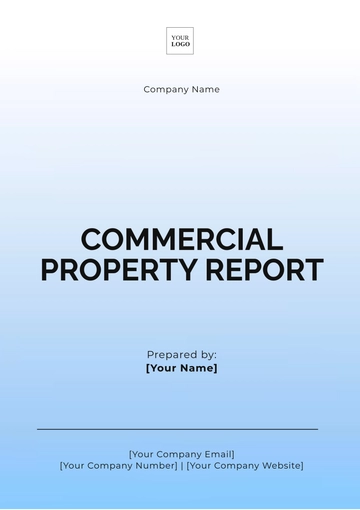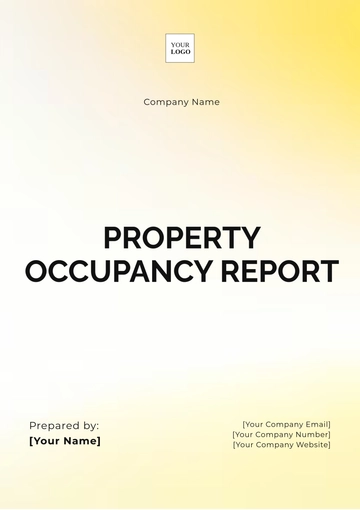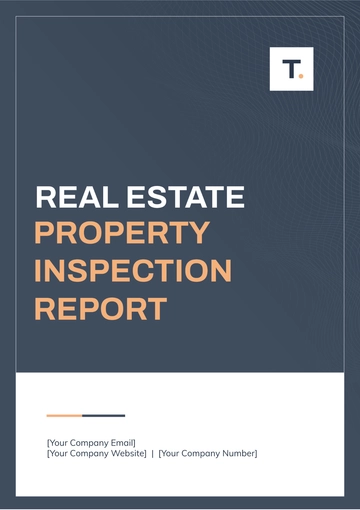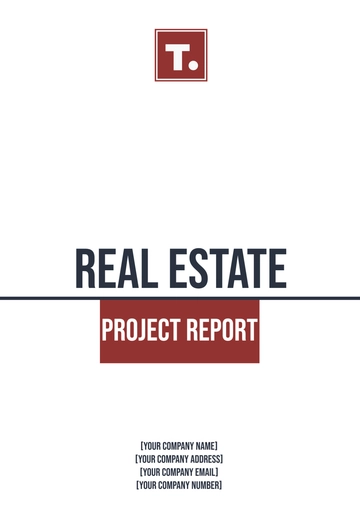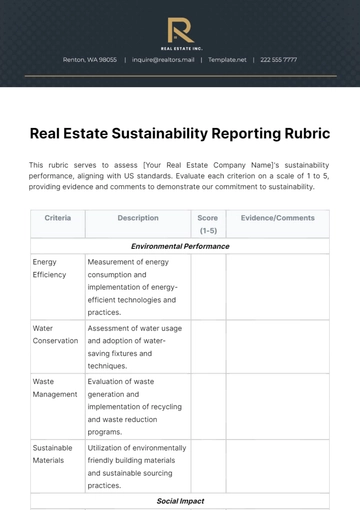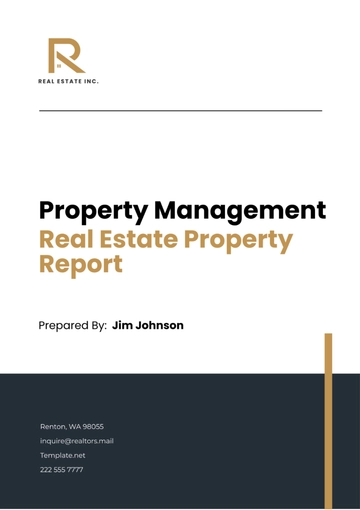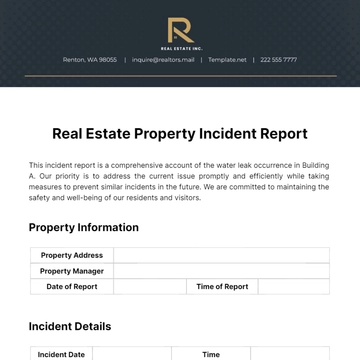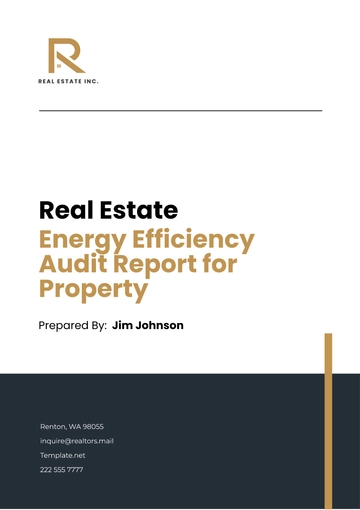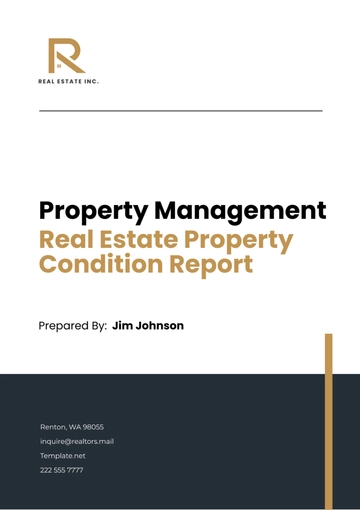Free Real Estate Energy Efficiency Audit Report for Property
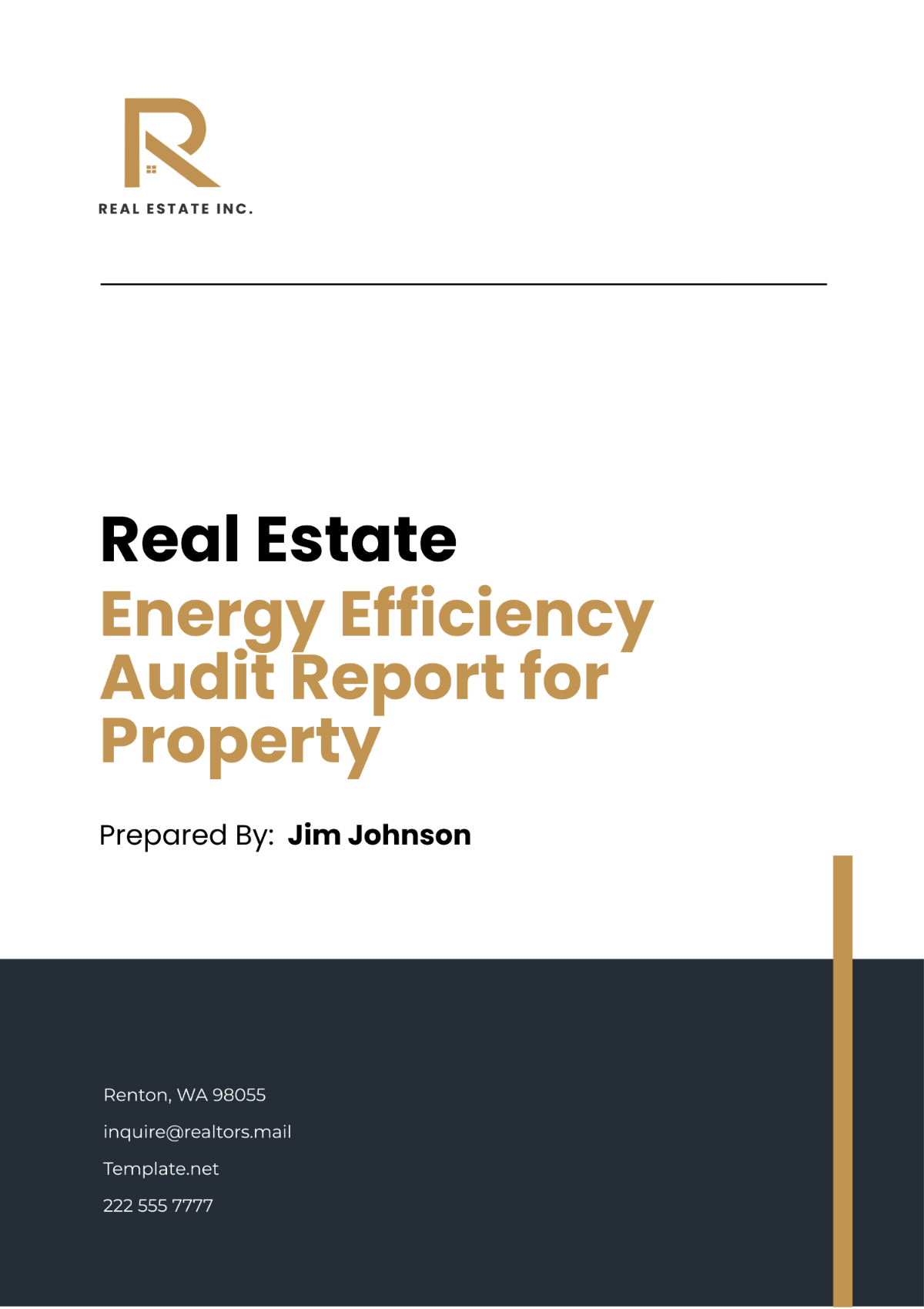
I. Executive Summary
This report presents the findings and recommendations from the energy efficiency audit conducted by [Your Company Name] at [Property Name/Address], focusing on identifying opportunities to reduce energy consumption and improve cost-efficiency. The audit included a comprehensive evaluation of the building's envelope, HVAC systems, lighting, and water heating systems. Key findings suggest significant energy savings can be achieved through targeted improvements in insulation, HVAC efficiency, and lighting upgrades. Implementing the recommended actions could result in an estimated 20% reduction in annual energy costs, with a payback period of less than five years for the majority of the measures.
II. Introduction
The purpose of this energy efficiency audit was to assess the current energy use of [Property Name/Address] and identify cost-effective measures to reduce energy consumption and enhance the property's overall sustainability. The audit was conducted over a three-week period in [Month, Year], covering an in-depth review of the property’s energy bills, on-site inspections, and interviews with maintenance staff.
III. Audit Methodology
The energy audit was conducted in several phases, starting with a preliminary analysis of the property's energy bills to establish a baseline for energy consumption. This was followed by an on-site visit, during which our team used various diagnostic tools, including infrared cameras, blower doors, and moisture meters, to assess the condition of the building's envelope, HVAC systems, lighting, and plumbing fixtures. Interviews with the property's maintenance staff provided additional insights into the operational practices and potential areas for improvement.
IV. Current Energy Consumption Profile
The analysis of the property's energy bills from the past 12 months revealed the following breakdown of energy consumption:
Energy Source | Consumption (kWh or Therms) | Cost ($) | Percentage of Total |
|---|---|---|---|
Electricity | 120,000 kWh | 14,400 | 60% |
Gas | 80,000 Therms | 9,600 | 40% |
Compared to industry benchmarks, the property's energy consumption is approximately 15% higher than similar buildings in the region, indicating potential for significant energy savings.
V. Building Envelope Analysis
Our inspection identified several areas where the building's envelope could be improved to reduce heat loss and gain, thereby reducing the demand on the HVAC systems:
Walls: The exterior walls have an insulation rating of R-11, below the recommended R-20 for this climate zone. Upgrading to R-20 insulation could reduce heating and cooling demands by up to 10%.
Roof: The roof insulation is currently R-25, while R-30 is recommended. Improving the insulation could reduce energy loss by an additional 5%.
Windows: Many windows are single-glazed and lack adequate sealing, contributing to significant heat loss. Replacing these with double-glazed, energy-efficient windows is expected to improve energy efficiency by up to 15%.
VI. HVAC System Analysis
The HVAC systems, including two gas-fired boilers and a central cooling unit, are over 15 years old and operate below current energy efficiency standards. Key findings include:
Boilers: Operating at an efficiency of approximately 65%, well below the current standard of 90% for new units. Upgrading to high-efficiency boilers could reduce gas consumption by 25%.
Cooling Unit: The central air conditioner has a SEER rating of 8, while modern units offer ratings of 15 or higher, suggesting potential electricity savings of 20% with an upgrade.
VII. Lighting System Analysis
The property's lighting primarily consists of older fluorescent and incandescent fixtures. Our analysis suggests the following:
Interior Lighting: Replacing existing bulbs with LED equivalents could reduce lighting energy use by approximately 50%.
Exterior Lighting: Upgrading to solar-powered LED fixtures for parking and walkways could reduce exterior lighting costs by up to 70%.
VIII. Water Heating and Plumbing Analysis
The current water heating system is an older, gas-fired model with moderate efficiency. Recommendations include:
Water Heater Replacement: Upgrading to a high-efficiency gas model or considering a solar water heating system could yield energy savings of 15-20%.
Low-Flow Fixtures: Installing low-flow toilets, showerheads, and faucets could reduce water heating demands by an additional 10-15%, contributing to both water and energy conservation efforts.
IX. Renewable Energy Potential
Our assessment indicates that [Property Name/Address] has a favorable orientation and roof space for solar photovoltaic (PV) installation. A preliminary analysis suggests the following:
Solar PV Potential: Installing a solar PV system could cover approximately 30-40% of the property's electricity needs, significantly reducing reliance on grid electricity and lowering operational costs.
Cost-Benefit Analysis: The initial investment for the solar PV system is estimated at $75,000, with potential annual energy savings of $5,000. Given current incentives and tax rebates, the payback period is estimated at 12 years, with substantial long-term savings thereafter.
X. Financial Analysis
A detailed financial analysis was conducted to evaluate the costs, savings, and return on investment for the recommended energy efficiency improvements. Key findings include:
Improvement Measure | Initial Cost ($) | Annual Savings ($) | Payback Period (Years) | ROI (%) |
|---|---|---|---|---|
Upgrade Insulation | 20,000 | 2,000 | 10 | 10% |
HVAC System Upgrade | 35,000 | 4,500 | 7.8 | 12.8% |
LED Lighting Retrofit | 10,000 | 1,500 | 6.7 | 15% |
Solar PV System Installation | 75,000 | 5,000 | 12 | 6.7% |
Given the substantial energy savings and the environmental benefits of the proposed measures, the investments present a compelling case for implementation. Furthermore, considering available financial incentives and the projected increase in energy costs, the ROI is expected to improve over time.
XI. Implementation Plan
To achieve the energy savings identified in this report, a phased implementation plan is recommended:
Short-term (0-2 years): | Focus on low-cost, high-impact measures such as LED lighting retrofit and the installation of low-flow plumbing fixtures. |
Medium-term (2-5 years): | Undertake more significant investments in HVAC upgrades and insulation improvements. |
Long-term (5+ years): | Evaluate the performance and savings from implemented measures and consider investment in solar PV installation based on updated financial analyses and technological advancements. |
Monitoring and verification of energy savings will be conducted through monthly energy usage reviews and annual audits to adjust the plan as necessary.
XII. Conclusion
The energy efficiency audit of [Property Name/Address] conducted by [Your Company Name] has identified several key areas where improvements can lead to substantial energy and cost savings. By implementing the recommended measures, the property can reduce its energy consumption, lower its operational costs, and contribute to environmental sustainability. The phased implementation plan provides a roadmap for making these improvements in a cost-effective manner, ensuring long-term benefits for [Property Name/Address].
- 100% Customizable, free editor
- Access 1 Million+ Templates, photo’s & graphics
- Download or share as a template
- Click and replace photos, graphics, text, backgrounds
- Resize, crop, AI write & more
- Access advanced editor
Maximize property potential with Template.net's Real Estate Energy Efficiency Audit Report Template. Crafted for precision, this customizable and editable tool integrates seamlessly with our Ai Editor Tool, enabling a tailored approach to energy assessments. Empower your real estate with actionable insights and strategies to enhance energy efficiency and sustainability effortlessly.
You may also like
- Sales Report
- Daily Report
- Project Report
- Business Report
- Weekly Report
- Incident Report
- Annual Report
- Report Layout
- Report Design
- Progress Report
- Marketing Report
- Company Report
- Monthly Report
- Audit Report
- Status Report
- School Report
- Reports Hr
- Management Report
- Project Status Report
- Handover Report
- Health And Safety Report
- Restaurant Report
- Construction Report
- Research Report
- Evaluation Report
- Investigation Report
- Employee Report
- Advertising Report
- Weekly Status Report
- Project Management Report
- Finance Report
- Service Report
- Technical Report
- Meeting Report
- Quarterly Report
- Inspection Report
- Medical Report
- Test Report
- Summary Report
- Inventory Report
- Valuation Report
- Operations Report
- Payroll Report
- Training Report
- Job Report
- Case Report
- Performance Report
- Board Report
- Internal Audit Report
- Student Report
- Monthly Management Report
- Small Business Report
- Accident Report
- Call Center Report
- Activity Report
- IT and Software Report
- Internship Report
- Visit Report
- Product Report
- Book Report
- Property Report
- Recruitment Report
- University Report
- Event Report
- SEO Report
- Conference Report
- Narrative Report
- Nursing Home Report
- Preschool Report
- Call Report
- Customer Report
- Employee Incident Report
- Accomplishment Report
- Social Media Report
- Work From Home Report
- Security Report
- Damage Report
- Quality Report
- Internal Report
- Nurse Report
- Real Estate Report
- Hotel Report
- Equipment Report
- Credit Report
- Field Report
- Non Profit Report
- Maintenance Report
- News Report
- Survey Report
- Executive Report
- Law Firm Report
- Advertising Agency Report
- Interior Design Report
- Travel Agency Report
- Stock Report
- Salon Report
- Bug Report
- Workplace Report
- Action Report
- Investor Report
- Cleaning Services Report
- Consulting Report
- Freelancer Report
- Site Visit Report
- Trip Report
- Classroom Observation Report
- Vehicle Report
- Final Report
- Software Report

